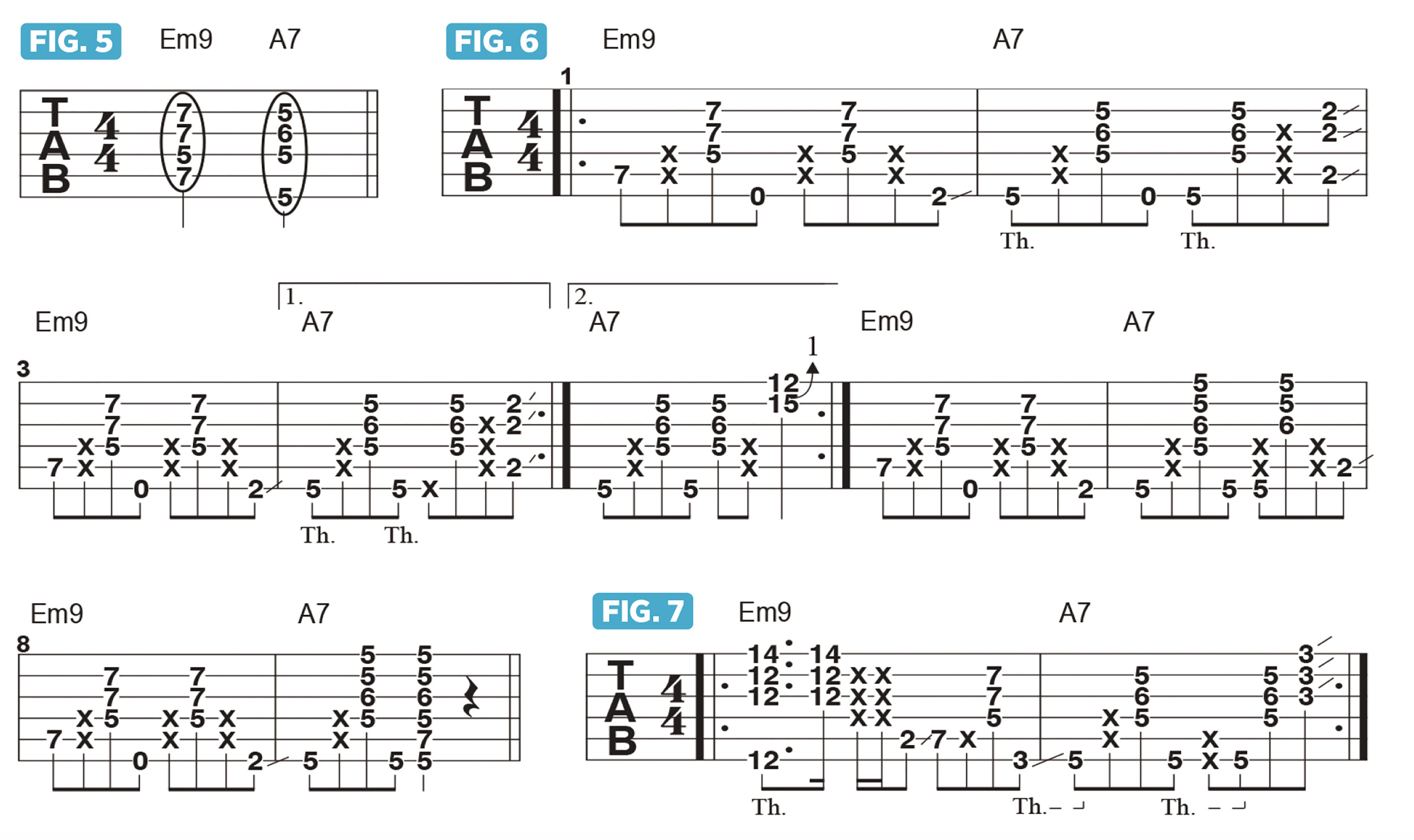“Add the hi-hat, and it’s, ‘Tss, tss, kahh, boom, boom-boom, kah, tss, boom, kahh’ etc. We can emulate these different elements on the guitar”: Cory Wong on why approaching rhythm guitar like a drummer makes you a better guitar player
A great approach for all rhythm guitar players is this: think like a drummer! Granted, the drummer is the one who is driving the song’s momentum, but rhythm guitar can similarly contribute.
Let’s begin with some simple things we guitarists can do that are derived from a standard drumbeat, the primary elements of which are the patterns played on the kick drum, snare, and hi-hats.
If we think of just the kick alternating with the snare, we’ve got, “Boom, kahh, boom-boom, kahh.” Add the hi-hat, and it’s, “Tss, tss, kahh, boom, boom-boom, kah, tss, boom, kahh” etc.
We can emulate these different elements on the guitar. Starting with the hi-hat, Figure 1 shows a series of fret-hand-muted strings sounded as straight eighth notes. We also have low and high notes.
Figure 2 emulates the alternating kick-to-snare sound that falls on the quarter-note downbeats, with a low G serving as the kick and a G one octave up functioning as the snare.
Also available to guitar players is the sound of harmony and melody. Putting all these things together will result in a rhythm guitar part that contributes to the groove akin to a drum set, but with the added bonus of pitches and timbres.
Figure 3 offers an example of a rhythm part that combines these different drumset-like elements, played in the key of G. The initial low G note in bar 1 represents the kick drum, followed by muted-string accents that function like the hi-hats.
All the latest guitar news, interviews, lessons, reviews, deals and more, direct to your inbox!
On beat 2, I slide into a two-note G7 voicing in the place of the snare accent, and beats 3 and 4 feature E and F bass notes walking up to G in alternating octaves. Bar 2 is virtually the same, but I stop on the low F on beat 4. The two-bar phrase is played three and a half times and ends with a chordal accent on G7.
Figure 4 presents another rhythm part, this one a little simpler, to help drive the point home. Here, the four elements are the low G, played on beat 1 of each bar; the two-note G7 voicing, played on beat 2, the Bb-to-B hammer-on played on beat 3, and the E-to-F eighth notes on beat 4. To me, this is a great example of how a rhythm guitarist can think like a drummer.
Let’s move to the key of E minor and shift between the i (one minor) chord, Em9, and the IV (four) chord, A7, the voicings of which are illustrated in Figure 5.
Figure 6 is a nine-bar rhythm part built from alternating bars of Em9 and A7. Notice the dead-string accents that fall on various upbeats and downbeats. Additionally, I slide up from the last note(s) at the end of each bar to add emphasis to the chord change. In bar 5, I drop in a high E unison bend, which functions like a one-beat “horn blast.”
We can elaborate on this idea, as shown in Figure 7, which sounds a high Em9 on beat 1 and emulates a crash-cymbal accent.
The more you think like a drummer, the more you’ll be able to effectively lock in with the rhythm section. If your bass player is thinking along the same lines, you both will add a lot of value to the groove.
- This article first appeared in Guitar World. Subscribe and save.
Funk, rock and jazz pro Cory Wong has made a massive dent in the guitar scene since emerging in 2010. Along the way, he's released a slew of quality albums, either solo or with the Fearless Flyers, the latest of which are Starship Syncopation and The Fearless Flyers IV, both from 2024.
You must confirm your public display name before commenting
Please logout and then login again, you will then be prompted to enter your display name.





